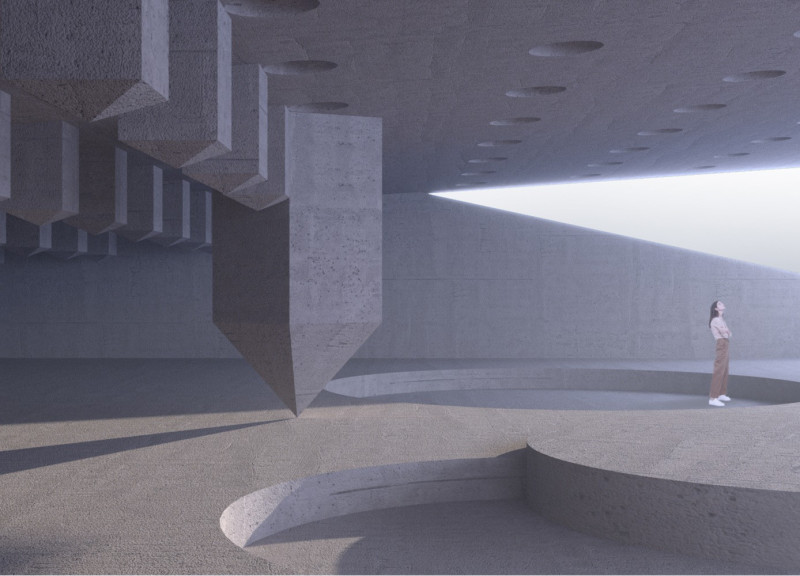5 key facts about this project
The design is located in Scotland and draws inspiration from the historical context of the persecutions that took place in the 16th century. Set against a backdrop where the State and the Church collaborated to regulate and control society, the design aims to evoke a sense of historical memory. It reflects themes of power dynamics, oppression, and societal division, creating a space that encourages reflection on the past.
Conceptual Framework
At the core of the design is the exploration of how the State and the Church interacted with one another. The project examines the historical narrative of the witch hunts and highlights the persistent class and gender divisions that resulted from these events. By organizing space thoughtfully, the design guides visitors through a complex web of historical power relationships, promoting contemplation on their implications for contemporary society.
Spatial Organization
The layout includes circulation spaces designed to facilitate movement. These areas illustrate the interactions between those in power and those who were oppressed. Visitors are encouraged to reflect on the significant historical moments that occurred at this site. The arrangement promotes a deeper understanding of the societal structures that contributed to ongoing injustices and inequities.
Representation of Oppression
A critical aspect of the design addresses the reproductive control imposed on women during this period. By highlighting this issue, the design serves as a commentary on the patriarchal systems that developed throughout history. The focus on class and gender division enhances the narrative dimension of the space, inviting discussions about how these themes continue to resonate today.
Symbolic Features
The project incorporates symbolic elements that echo the oppressive nature of governance in the past. These details capture the experiences of marginalized groups, enriching the educational experience for all who visit. Each feature adds a layer of meaning to the design, enabling visitors to engage more fully with the historical context. The architecture ultimately serves as a platform for storytelling, fostering a deeper connection to the lessons of history.























